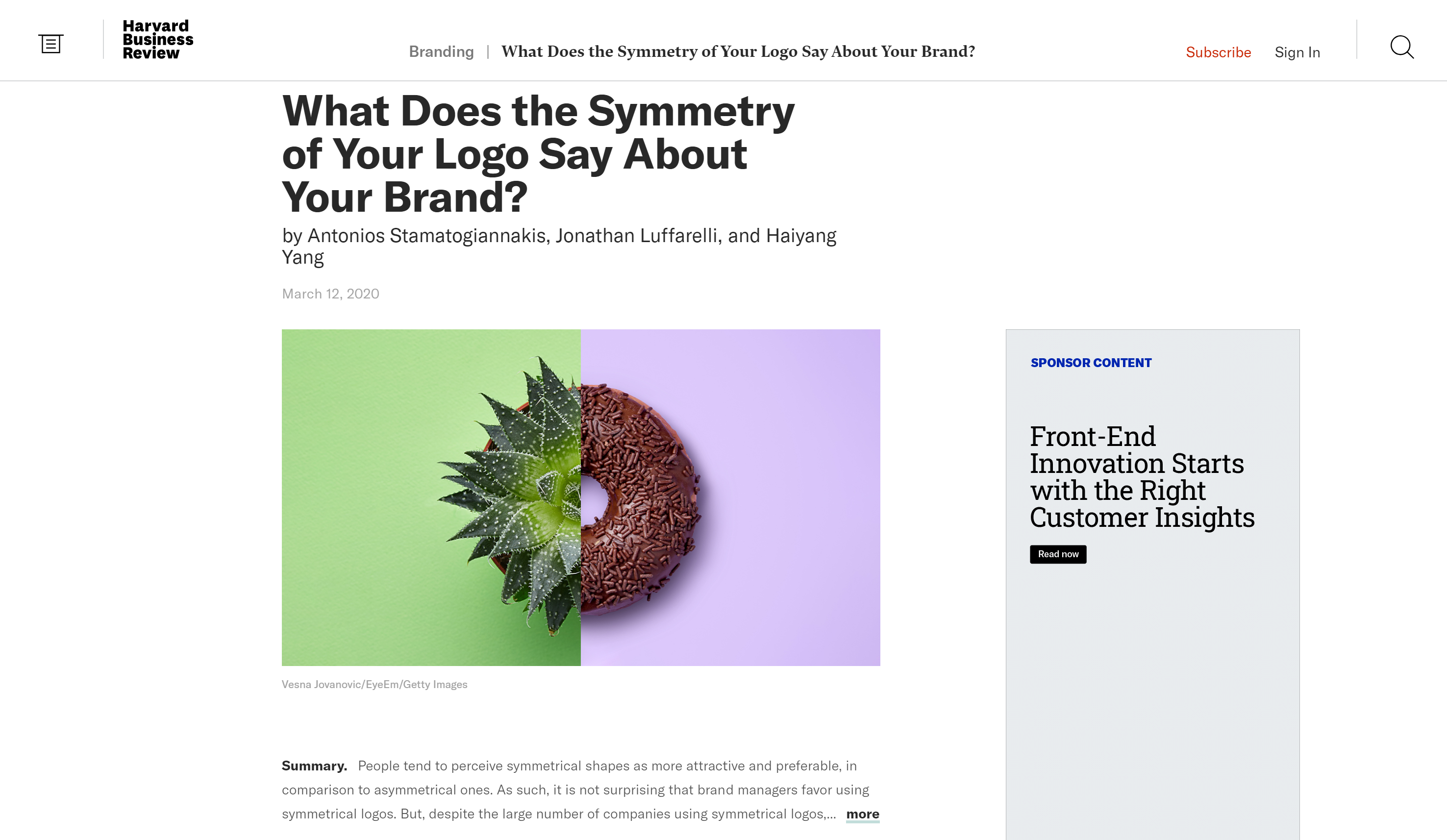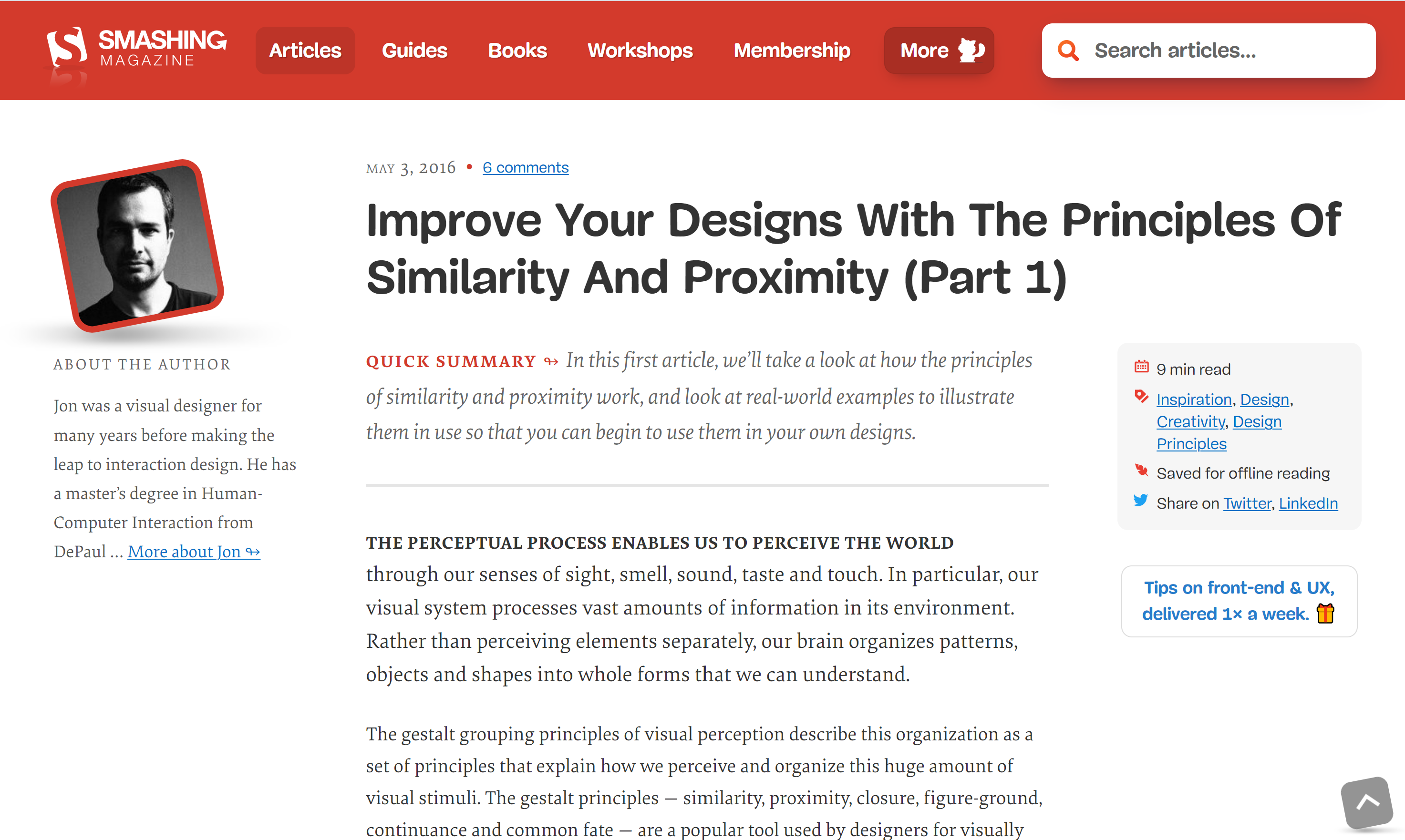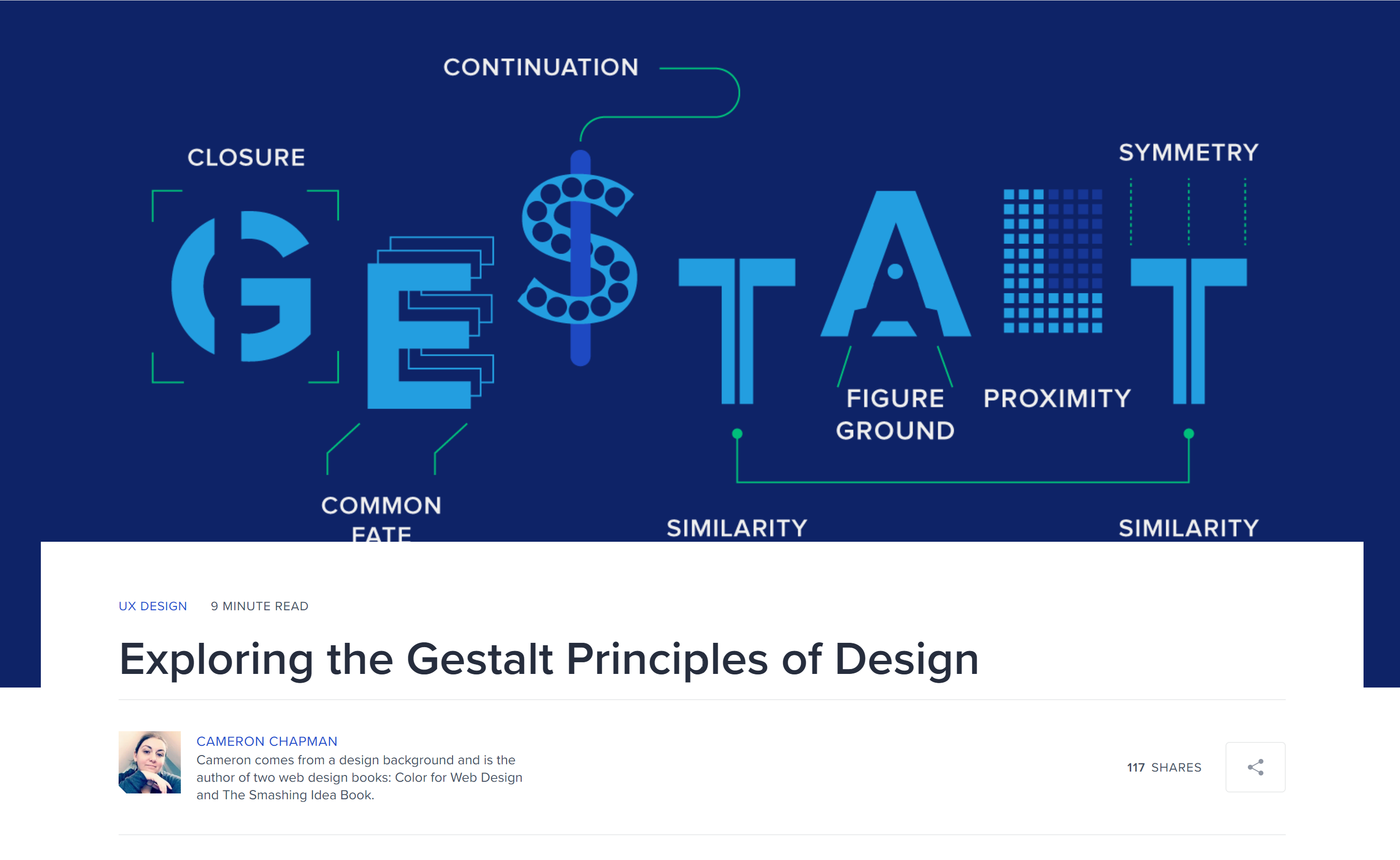In a time of disarray and disorder, many of us are searching for directness and discipline wherever we can. While the vernacular may vary, the Gestalt principles are a design staple in today’s chaotic world. The German word “gestalt” refers to shape or form but can also allude to the concept of holism. This is the idea that systems should be viewed as a whole instead of a loose collection of parts.1
The six principles we’ll be delving into are:
Each one of these principles helps our minds simplify complex designs and make order out of chaos. The idea was first conceived in the 1920s by three German psychologists, Max Wertheimer, Kurt Koffka, and Wolfgang Kohler.2 These three aimed to understand how the mind perceives chaotic parts of a whole and proposed a set of laws that the mind follows while looking for order in disorder. Kohler famously summarized the essence of the Gestalt principles in the quote “The whole is different than the sum of its parts.” 3

> Continue to explore the principles >






